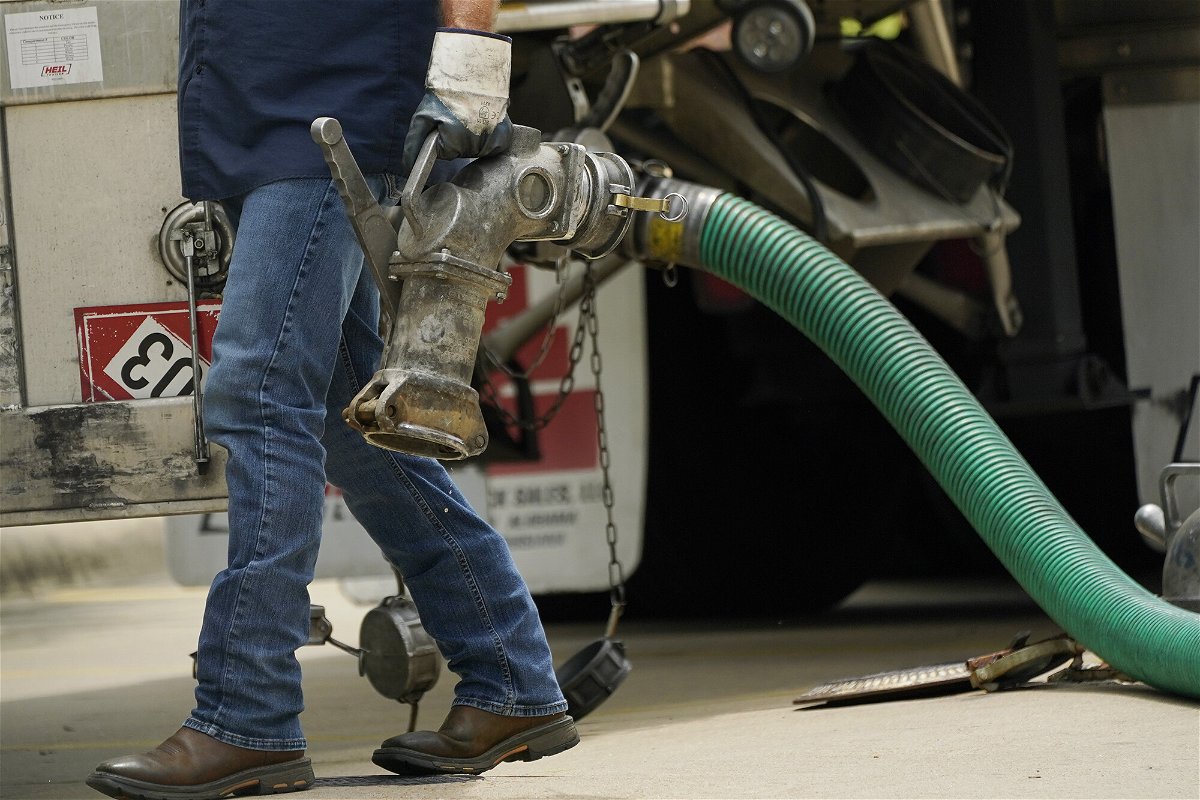Oil drops below $100 a barrel for first time since early May

For the first time in nearly two months
By Alicia Wallace and Chris Isidore, CNN
For the first time in nearly two months, crude oil prices have fallen below $100 a barrel, reflecting investors’ growing concerns about a US recession that could crimp demand for oil.
The price of West Texas Intermediate crude tumbled as much as 10% Tuesday, to hit a low of $97.43 before closing at $99.50, down 8% on the day. Brent crude oil was down by more than 10% when it hit a low for the day of $101.10 a barrel, before settling at $102.77 at the close.
It’s the first time that WTI has been below $100 since May 11. That was also the last time Brent, which typically trades a bit higher, was below $102 a barrel. Brent has not been below $100 since April 25.
Wholesale gas futures fell as well, down almost 10% for the day at the close, or 36 cents a gallon.
The national average cost of a gallon of gas at the pump is now $4.80, according to the latest AAA reading, down one penny from Monday and 8 cents from a week ago. Gas prices crossed the $5 mark for the first time on June 11 and hit a peak of $5.02 a gallon on June 14.
Rising fears about the chances of a recession are the primary driver of the latest sell-off in oil and gasoline futures, said Tom Kloza, global head of energy analysis for OPIS.
Until fairly recently, oil and gasoline investors had believed that there was little in the way of market forces to keep prices in check in the near term. “There is now a perceived huge downward risk tied to recession risk,” he said.
There have been mounting fears of a recession in recent weeks, which has helped take oil prices sharply lower. Brent was at $123.58 a barrel on June 8, while WTI was at $122.11. But since that peak, the Consumer Price Index showed consumer prices hit a 40-year high, one of the key metrics that prompted the Federal Reserve to hike interest rates by three-quarters of a percentage point as a way of combating those price pressures. That has raised expectations that the central bank’s aggressive moves to cool the economy could cause job losses and a recession.
Oil and gas prices surged earlier this year after Russia’s invasion of Ukraine prompted the United States and its European allies to sanction Russian energy exports, effectively choking off one of the world’s largest producers.
But the supply of oil is only part of the equation traders consider when bidding on oil futures. Demand is the other part. And nothing kills demand like a recession, which reduces economic activity overall. When people get laid off, there are fewer people driving to work or to the store or other destinations.
The previous time gas hit a record high was during the Great Recession, when the national average reached $4.11 a gallon in July 2008. But by the end of that year, it had fallen 60%, to $1.62 a gallon, as demand plunged. But cheap gas was of little consolation to the nearly 3 million people who lost their jobs during those five months.
So far, drivers have seen relatively little relief at the gas pump from the recent fall in oil and gasoline futures. The national average price of gas has fallen only 4%, or 22 cents, since the June 14 record, while wholesale gas futures have dropped 22% since topping out at $4.28 a gallon on June 9.
US gasoline retailers have little incentive to cut prices more deeply with strong demand for gasoline with the summer driving season in full swing.
“There’s no compelling reason for retailers to lower their price more with this strong demand,” said Kloza.
There could be more price drops at the pump in the near term — a decline of another 10 cents a gallon in the next week or so wouldn’t be a surprise, Kloza said. Station owners who are paying less for wholesale gas will be watching to how much of the savings their competitors are passing on to customers before they set their own prices. But the expression that gas prices go up like a rocket and come down like a feather is likely to play out once again, Kloza said.
There likely won’t be any big declines until schools reopen and the summer driving season ends this fall, he predicted. There are also risks that further developments in Russian oil exports tied to the war in Ukraine or hurricanes hitting US oil infrastructure along the Gulf Coast could send prices climbing up rapidly once again.
“I wouldn’t put away the fives used in gas price signs quite yet,” he said.
The-CNN-Wire
™ & © 2022 Cable News Network, Inc., a WarnerMedia Company. All rights reserved.